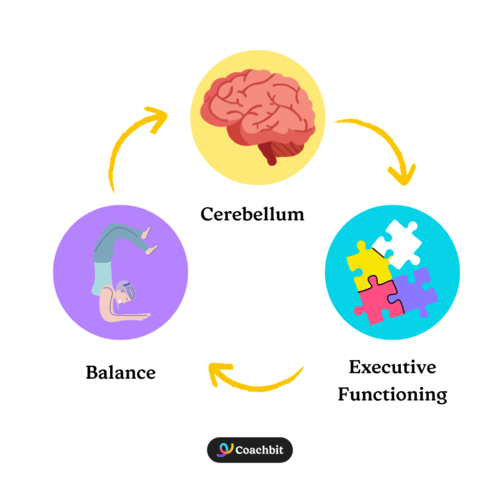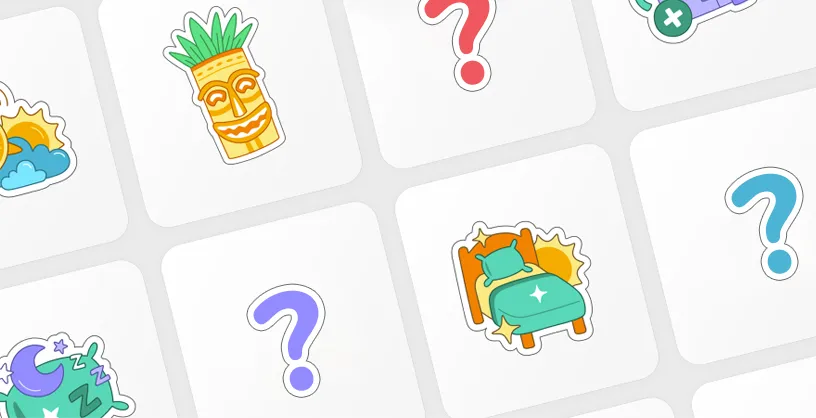_ZNuWDg.webp)
With the increasing prevalence of ADHD in kids and teens, many parents have begun to explore non-pharmacological treatments for teens to manage and alleviate the symptoms of ADHD. These alternative and natural treatments for ADHD include behavioral therapy, ADHD coaching, and nutritional remedies.
We've explored a few more science-backed ADHD treatments for teens that work - balance training and drawing. Read more about them here!
The Popularity of Balance Exercises as An Alternative Treatment for ADHD
Many parents and kids are trying simple balance exercises to improve the unwanted symptoms of ADHD - and they are seeing results! Balance exercises improve attention, memory, and self-regulation in children with ADHD. These exercises are simple, for example - standing on one leg or learning to juggle.
Balance exercises work because the area in the brain responsible for coordination and precise movement - the cerebellum - is intricately connected to the region of the brain that controls executive functioning - the prefrontal cortex. Kids with ADHD are known to have executive functioning difficulties - time management, organization, impulse control, and focus - to name a few.

By practicing balance exercises, kids can strengthen these neural connections. Put simply - when kids improve their balance, they improve their executive functioning.
Drawing Can Improve Executive Functioning Skills in Teens with ADHD
It has been groundbreaking for parents to find that simple and fun exercises their kids can do at home can be a natural treatment for ADHD, and they show positive results. Kids with ADHD get bored easily, and their brains crave new and stimulating activities. That's why its useful to introduce new and fun ways to stimulate their cerebellum and improve their executive functioning skills.
Drawing is another easy activity kids can do at home with little effort. Much like balance exercises, drawing requires fine motor skills, precise movement, timing, and coordination. When kids draw, their cerebellum is activated. By practicing drawing, they can improve their fine motor and executive functioning.
So how can you get your kids to draw in a way that stimulates their cerebellum? We've put together a few tips and exercises to help.
Try These 5 Drawing Exercises with Your Kids
For younger kids, coloring-in books are a great way to practice drawing in the lines and holding a pencil. Older kids may need to be challenged more.
These exercises mostly require a piece of paper, a pencil, and scissors to cut some shapes. Try to practice these exercises for at least 10 to 15 minutes a day, and you'll notice the difference.
#1 Place a blank sheet of paper on your right and another on your left. Hold a pencil in each hand. At the same time, draw a straight line vertically on the sheet on the right and a round shape (circle) on the sheet on the left. Repeat this sequence three times, alternating the figures on each sheet.
#2 Place a sheet of paper on your right and left side. On the right, draw a triangle, and on the left, draw a square (at the same time). Then switch: draw the square on the first sheet and the triangle on the second sheet.
#3 On one sheet, draw a circle; on the other, draw a triangle. Then swap the figures and repeat the processs.
#4 Draw two circular shapes (circles) on one sheet while simultaneously drawing one four-sided shape (square) on the other sheet. Then switch the figures between the sheets.
#5 Draw a circular shape with one hand and a triangle with the other hand while using one leg to trace a square shape on the floor. Then switch hands for drawing and switch legs for tracing the square shape.

Final Thoughts
Drawing exercises are an effective alternative treatment for ADHD, as they target both motor function and executive functioning skills. These exercises are a fun and engaging way to enhance attention and organizational skills. What's more, not only are they a non-pharmological treatment for ADHD, but they promote the overall well-being of kids. So whip out some pens and pencils and give them a try today!
Disclaimer: This is not intended to be a substitute for professional medical advice and should not be relied on as health or personal advice. Always seek the guidance of your doctor or other qualified health professionals with any questions you may have regarding your health or a medical condition
Sources:
Feng Lei, Ren Yuanchun, Cheng Jia, Wang Yufeng, "Balance Training as an Adjunct to Methylphenidate: A Randomized Controlled Pilot Study of Behavioral Improvement Among Children With ADHD in China," Frontiers in Psychiatry, Vol 11, 2021.
Budde H, Voelcker-Rehage C, Pietrabyk-Kendziorra S, Ribeiro P, Tidow G. "Acute coordinative exercise improves attentional performance in adolescents."_ Neuroscience Letters_, 2008 Aug 22;441(2):219-23
Edward Hallowell and John Ratey, ADHD 2.0: New Science and Essential Strategies for Thriving with Distraction--from Childhood through Adulthood.
Edward Hallowell and John Ratey, Delivered from Distraction: Getting the Most out of Life with Attention Deficit Disorder
How many core habits and skills is your child missing?
Take our short quiz and find out.
Take our quiz

_2rxjp3.webp)
_S3ttf.webp)